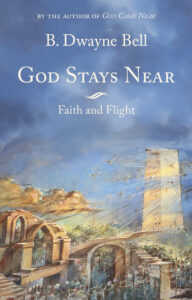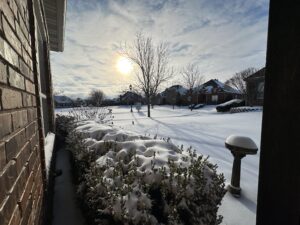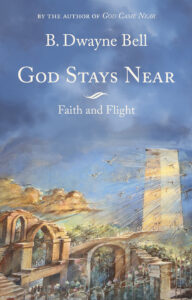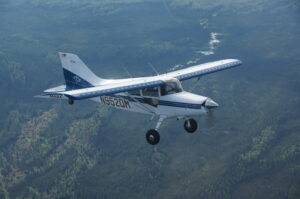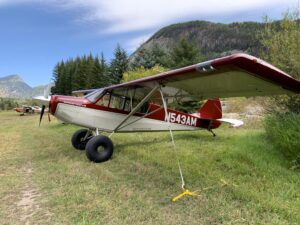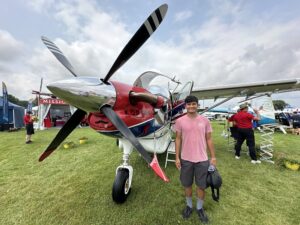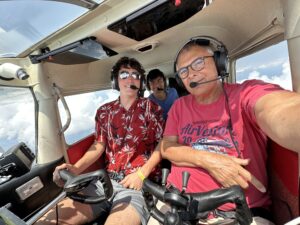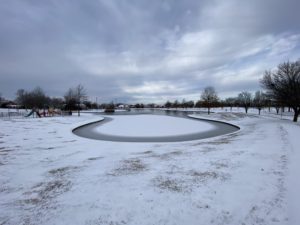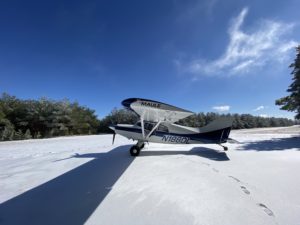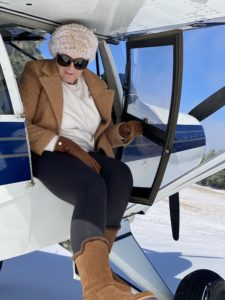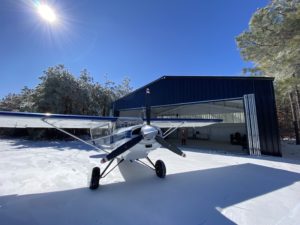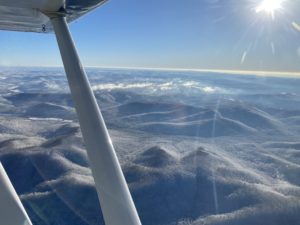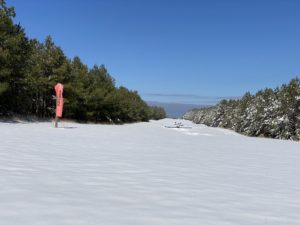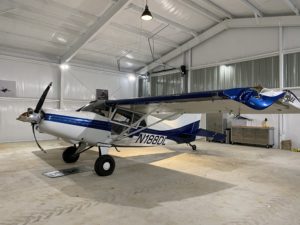From my journal January 27, 2023: 0245L, I awakened thirsty and sad, so I decided to get up and sit by the fire with my journal in hand. I then recorded the following:
The backcountry flying and flying-freedom part of our lives may be over.
I wrecked the airplane yesterday, landing in wet snow — something I didn’t see coming and can hardly believe happened.
Neither Elizabeth nor I was hurt, and that’s the main thing.
We have much to be thankful for. It’s insured, and we’ll probably break even on our investment, so to speak.
But something treasured is gone — something that brought joy to our lives, beauty, seeing the Earth often from above and visiting inaccessible places.
It’s about the loss of that ability and freedom. It’s about the death of a vision and the change that it brings.
Something that brought joy, beauty, and adventure to life is gone, with no clear path to getting it back.
I know it shouldn’t be, but it feels almost like a death in the family — something to be mourned. Our daughter was very sympathetic and kind when we talked to the kids last night. She kept saying, “It’s OK to mourn the loss — we all feel it.”
It’s not about the metal, although I can’t help but feel I’ve lost an old, trusted friend. It’s taken me to Alaska, Idaho, Honduras, and untold places in the Ozarks and around the USA with friends. It’s been faithful, trustworthy, strong, and true.
It’s about a way of life that’s gone and likely not coming back.
That’s the way I feel lately about America and the church. Only the grace of God can bring good out of this, and it may take a crash to experience what we’ve lost. Why wouldn’t my heart be sad?
My hope and trust are in the Lord. That I can say with hope and honesty.
Even now, the reality of His nearness brings warmth and joy to my soul.
I’ll put more wood on the fire and read from the Psalms. I’ll await more of Your thoughts and any truth You would share. Thank you, Lord.
The YouVersion verse of the day may apply to the loss and life in the USA in the future: “No temptation has overtaken you but such as is common to man; and God is faithful, who will not allow you to be tempted beyond what you are able, but with the temptation [to be overly sad, hopeless, have a bad attitude, be negative or worry] will provide the way of escape also, so that you will be able to endure it” (1 Corinthians 10:13).
It’s 3:48 in the morning, and I just sent that verse to a friend with this message: “I had an airplane crash yesterday. We are OK. Are you OK?” Then I prayed for him. I think self-pity is behind many of our troubles, and I didn’t have that revelation until recently.
As far as the crash goes, I think I heard, “Don’t make more of it than you should or less of it than you should.”
Then I heard a twist on an old saying, “You can take the dog out of the fight, but you can’t take the fight out of the dog.”
Don’t be ashamed that you’re a man and adventurer who enjoyed exploring every corner of the airplane’s capabilities. Yes, what you don’t know or see can hurt you. But there is also “The Man in the Arena.” [A famous quote by Teddy Roosevelt]
Which is more important? To be totally safe — if there is such a thing? Or to be unafraid of taking a measured risk?
What brings you joy and satisfaction? What portals have opened the vastest horizons for you or led out onto the highest peaks and broadest plains?
I think I hear, “Don’t quit being a man” in all this. Take the hit to your pride; that’s a good thing. Honor and tell the truth, then get up and get going again.
I don’t disregard safety. No rational pilot does. But I don’t worship it, either.
We all learn from our mistakes; what doesn’t kill you should make you stronger — unless you cower in fear. Then you’re in for a slow death — by degrees.
I’m not happy this object lesson came my way. I’m very sad about it. It hurts a lot for the reasons I have journaled in the early morning.
But there is a flying saying as old as it is true, “Any landing you walk away from is a good one.” So I made a good landing on top of the snow-covered mountain yesterday. I got the Jeep from the hangar and drove a short distance to a warm, beautiful cabin to spend the night with my best friend, my lovely wife. Life is good — even with a few bumps, falls, and stings.
Just before sunset, a friend on the other side of the mountain called to say hello, unaware of the accident. He offered and came with his four-wheel-drive tractor and front-end loader. We flipped the plane back over, then towed it to the hangar for the night. It didn’t change things. But it made my heart feel better to see her in a dry hanger on her feet instead of on her back in the snow.
After writing what I heard and thought in the beautiful stillness of the early morning, I feel better. Circumstances haven’t changed. But the Spirit has warmed my heart, let it cry, and pointed me again toward courage, endurance, and soaring in life. Thank you, holy Father. You are Jehovah Shalom, my Lord, and my God.
**************
Addendum:
To those of you I’ve promised an airplane ride, let me say I’m truly sorry. You know I meant it. I’ve never refused a free flight to anyone who asked. I’ve given scores of flights and enjoyed each one immensely watching others experience the wonder and beauty of flight. Don’t give up hope, we’ll see what happens.
This speaks to the emotional, spiritual situation surrounding the accident, and where our hearts are. In the coming days, for my pilot friends and those interested I’ll speak to what happened and how it happened, as best I understand it, in more detail to add to our corporate body of knowledge and experience. A quick summary might be: Wet, dense snow will stop you a lot faster than you can imagine, and if you must try it, have an aft CG (some or a lot of weight in the rear of the plane.)


